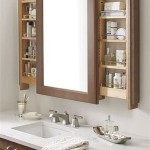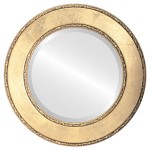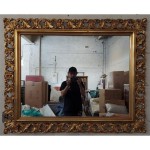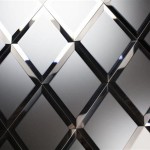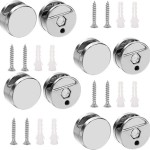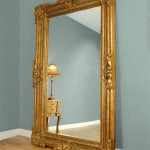Victorian Floor Standing Mirror
The Victorian era, spanning the reign of Queen Victoria from 1837 to 1901, witnessed a flourishing of decorative arts. Among the many items that exemplify the aesthetic sensibilities of the period, the Victorian floor standing mirror stands as a testament to the era's craftsmanship and appreciation for ornate design. These mirrors served both practical and decorative purposes, reflecting the fashions and interiors of Victorian homes while also adding a touch of grandeur to any space.
Victorian floor standing mirrors are characterized by several key features. Full-length, they allowed individuals to view their entire attire, an important aspect in a time when fashion played a significant role in social status and self-expression. The frames of these mirrors were often elaborately carved from wood, typically mahogany, walnut, or rosewood. Popular motifs included floral patterns, scrolls, and geometric designs, echoing the broader decorative trends of the era. Gilding, the application of thin layers of gold leaf or paint, was frequently used to enhance the opulence of the frames, contributing to the overall luxurious appearance of the mirror.
The mirror plate itself also holds historical significance. Before the modern float glass process, mirrors were made using mercury silvering, a technique that involved applying a thin layer of silver amalgam to the back of a glass sheet. This process often resulted in slight imperfections and a subtle waviness in the reflection, which many collectors consider a hallmark of antique mirrors. However, this method also posed health risks due to the toxicity of mercury, eventually leading to its replacement by safer techniques in the late 19th century.
Beyond their functional role, Victorian floor standing mirrors played a crucial role in the interior design of Victorian homes. Placed strategically in bedrooms, dressing rooms, and hallways, they served to amplify natural light and create an illusion of spaciousness. The ornate frames added a decorative element to the room, complementing the heavy draperies, patterned wallpapers, and richly upholstered furniture typical of the Victorian aesthetic.
Several types of Victorian floor standing mirrors can be distinguished. The cheval mirror, characterized by a pivoting frame supported by two or more legs, offered adjustable viewing angles. These were often found in bedrooms and dressing areas. Another common style featured a stationary frame with a rectangular or arched top, often incorporating a decorative pediment or finial. These mirrors were frequently placed in hallways or living rooms as decorative focal points.
The popularity of Victorian floor standing mirrors extended across different social classes. While wealthy families could afford elaborate, custom-made pieces with intricate carvings and expensive materials, more affordable versions were also produced for the growing middle class. These less expensive mirrors often featured simpler designs and less ornate frames, but they still retained the essential characteristics of the Victorian style.
Today, Victorian floor standing mirrors remain highly sought-after items in the antique market. Their enduring appeal lies in their combination of functionality, artistry, and historical significance. Collectors appreciate the fine craftsmanship of the carved frames, the unique qualities of the antique mirror plates, and the glimpse they offer into the lifestyle and aesthetics of the Victorian era. When evaluating an antique Victorian mirror, factors such as the quality of the carving, the condition of the mirror plate, and the presence of original gilding significantly influence its value.
Caring for a Victorian floor standing mirror requires attention to its age and delicate nature. Dusting with a soft cloth is recommended, avoiding harsh chemicals that can damage the frame or the mirror plate. Professional restoration may be necessary for mirrors with significant damage, such as chips in the glass or extensive wear to the gilding. Proper care and maintenance can ensure that these beautiful pieces continue to be admired for generations to come.
The resurgence of interest in Victorian-era design has also led to the production of reproduction Victorian floor standing mirrors. While these modern interpretations may capture the aesthetic essence of the originals, they typically lack the historical significance and unique characteristics of authentic antique mirrors. Distinguishing between antique and reproduction mirrors requires careful examination of the materials, construction techniques, and signs of age and wear.
The Victorian floor standing mirror stands not merely as a reflective surface, but as a reflection of a bygone era. Its presence in a modern interior can introduce a touch of history, elegance, and the unique charm of Victorian design, making it a timeless piece that transcends fleeting trends.

Arched Victorian Hand Casted Full Length Mirror In Mild Steel Corsica Designs

Arched Victorian Hand Casted Full Length Mirror In Mild Steel Corsica Designs

Full Length Mirror Victorian English Style Floor Standing Home Decor

Buy Vintage Copper Hand Casted Metal Victorian Arched Floor Mirror With Stand By Corsica Designs At 3 Off Pepperfry

Victorian Mahogany Cheval Mirror Over 500 Pieces Antique Furniture

All Solid Wood Dressing Mirror Pure Full Length Retro Floor European Style Bedroom China Made In Com

Antique Victorian Carved Oak Free Standing Mirror Chairish

Arched Victorian Hand Casted Full Length Mirror In Mild Steel Corsica Designs

Victorian Mahogany Freestanding Cheval Mirror 1840s Chairish

Victorian Style Cheval Mirror Coburg Hill Antiques

